 |
The more effective teams exhibit more psychological safety. Rather than concealing fear and blame, there is openness, dialogue, and inquiry.
|
142 |
 |
…be the change that you wish to see.The leadership team is team number one. Be a leader rather than a manager or commander.
|
151 |
 |
…what factors lead to high-performing teams[?] The research found that the number on factor is psychological safety.
|
152 |
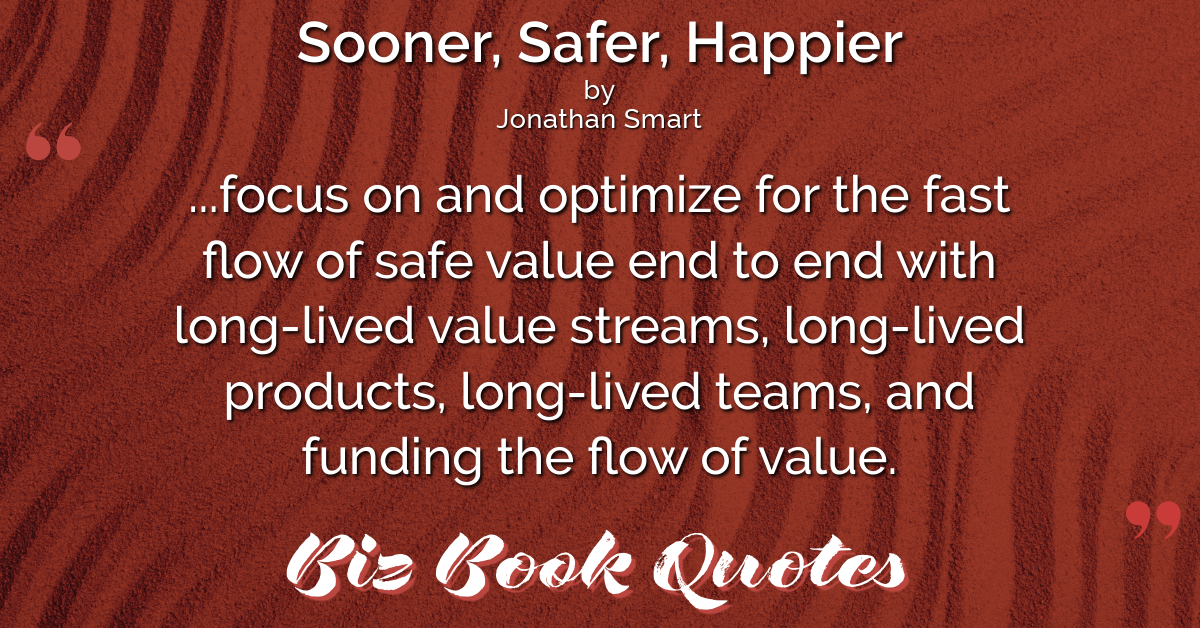 |
…focus on and optimize for the fast flow of safe value end to end with long-lived value streams, long-lived products, long-lived teams, and funding the flow of value.
|
178 |
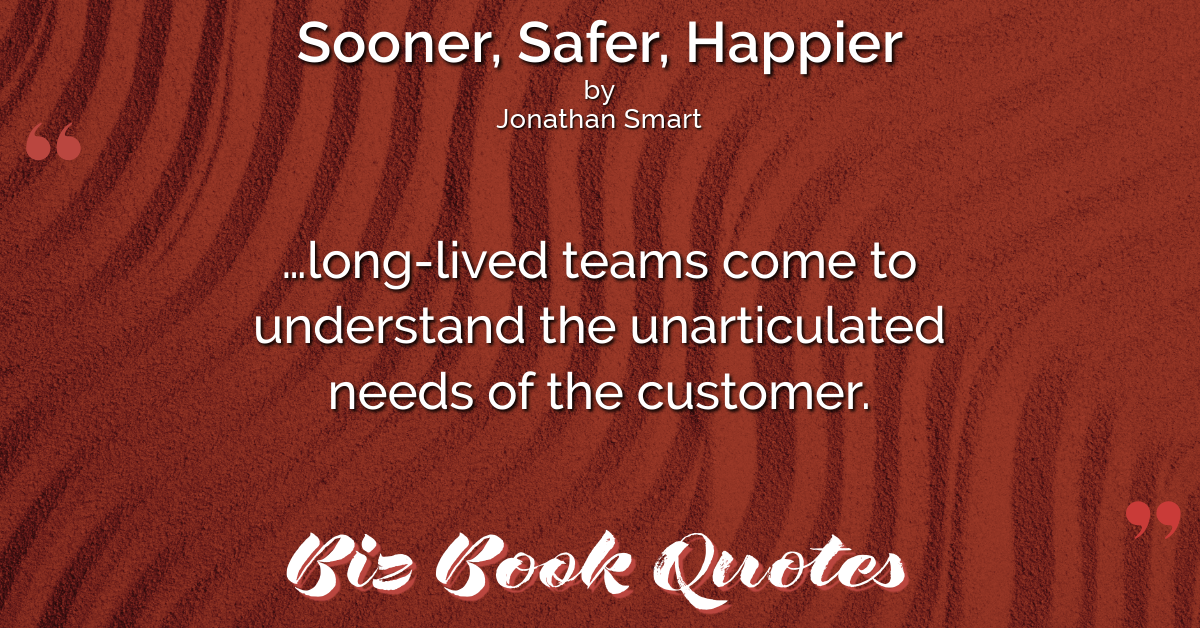 |
…long-lived teams come to understand the unarticulated needs of the customer.
|
185 |
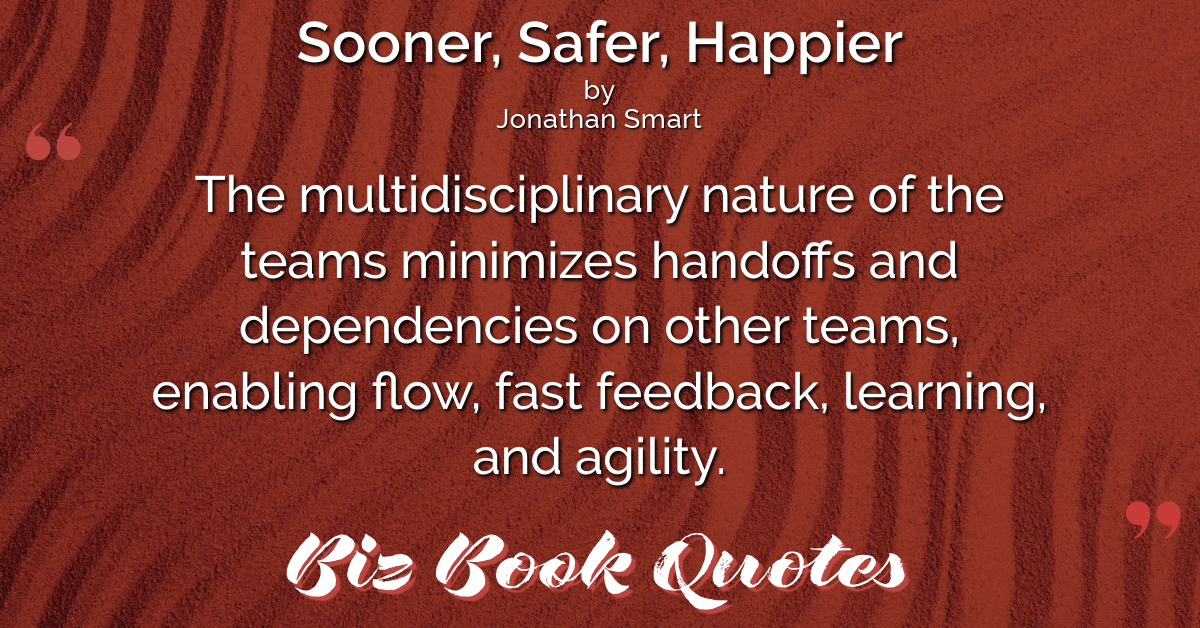 |
The multidisciplinary nature of the teams minimizes handoffs and dependencies on other teams, enabling flow, fast feedback, learning, and agility.
|
185 |
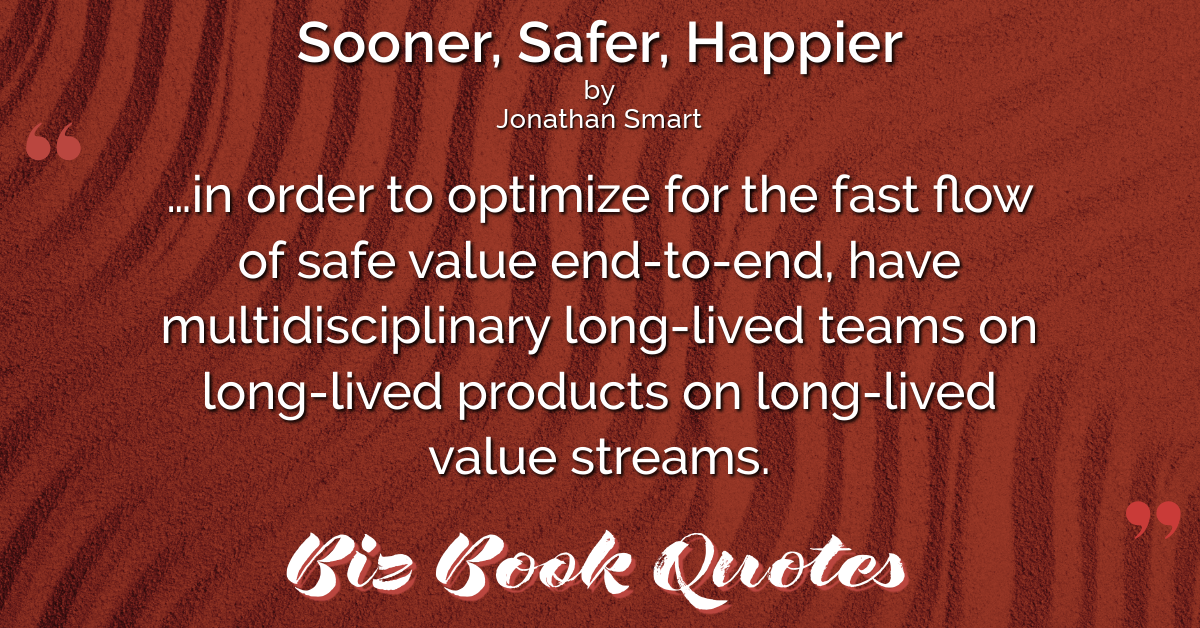 |
…in order to optimize for the fast flow of safe value end-to-end, have multidisciplinary long-lived teams on long-lived products on long-lived value streams.
|
192 |
 |
Teams should have the autonomy to self-manage, self-design, and self-govern within their boundaries.
|
303 |
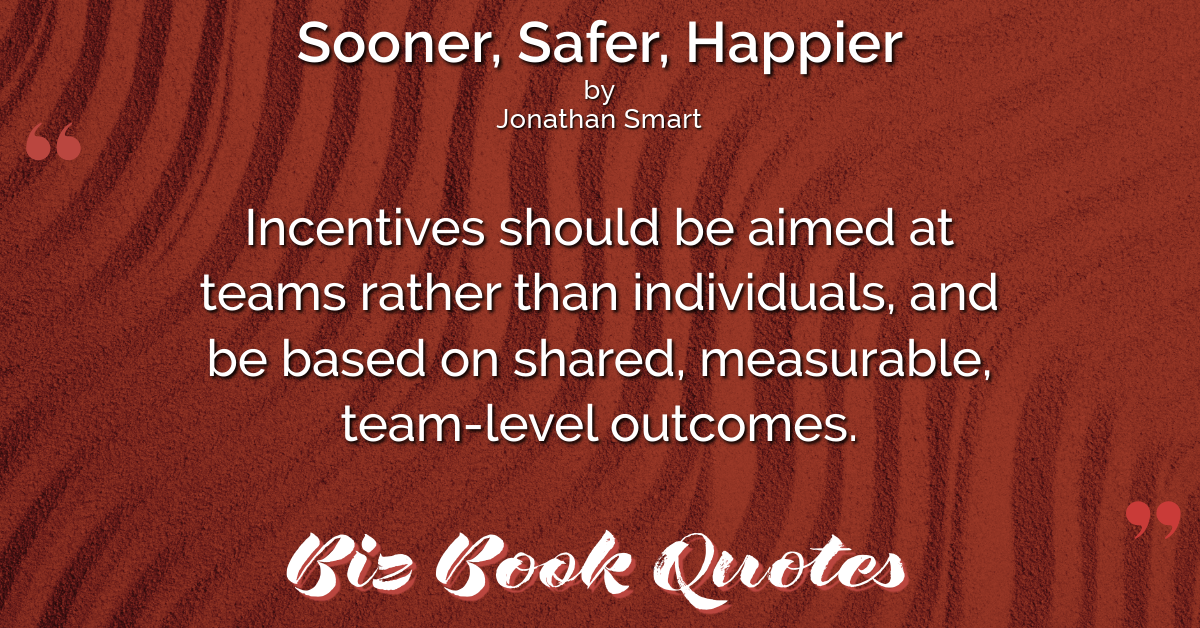 |
Incentives should be aimed at teams rather than individuals, and be based on shared, measurable, team-level outcomes.
|
304 |
 |
Being willing to put in the extra hours when needed will show your boss that you are a dedicated team player.
|
148 |